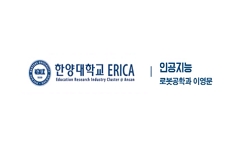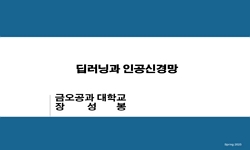Breast cancer is the second leading cancer for Korean women and its incidence rate has been increasing annually. If early diagnosis were implemented with epidemiologic data, the women could easily assess breast cancer risk using internet. National Can...
http://chineseinput.net/에서 pinyin(병음)방식으로 중국어를 변환할 수 있습니다.
변환된 중국어를 복사하여 사용하시면 됩니다.
- 中文 을 입력하시려면 zhongwen을 입력하시고 space를누르시면됩니다.
- 北京 을 입력하시려면 beijing을 입력하시고 space를 누르시면 됩니다.




Computational Discrimination of Breast Cancer for Korean Women Based on Epidemiologic Data Only
한글로보기https://www.riss.kr/link?id=A104782968
- 저자
- 발행기관
- 학술지명
- 권호사항
-
발행연도
2015
-
작성언어
-
- 주제어
-
등재정보
KCI등재,SCI,SCIE,SCOPUS
-
자료형태
학술저널
-
수록면
1025-1034(10쪽)
-
KCI 피인용횟수
5
- 제공처
-
0
상세조회 -
0
다운로드
부가정보
다국어 초록 (Multilingual Abstract)
Breast cancer is the second leading cancer for Korean women and its incidence rate has been increasing annually. If early diagnosis were implemented with epidemiologic data, the women could easily assess breast cancer risk using internet. National Cancer Institute in the United States has released a Web-based Breast Cancer Risk Assessment Tool based on Gail model. However, it is inapplicable directly to Korean women since breast cancer risk is dependent on race. Also, it shows low accuracy (58%-59%). In this study, breast cancer discrimination models for Korean women are developed using only epidemiological casecontrol data (n = 4,574). The models are configured by different classification techniques: support vector machine, artificial neural network, and Bayesian network. A 1,000-time repeated random sub-sampling validation is performed for diverse parameter conditions, respectively. The performance is evaluated and compared as an area under the receiver operating characteristic curve (AUC). According to age group and classification techniques, AUC, accuracy, sensitivity, specificity, and calculation time of all models were calculated and compared. Although the support vector machine took the longest calculation time, the highest classification performance has been achieved in the case of women older than 50 yr (AUC = 64%). The proposed model is dependent on demographic characteristics, reproductive factors, and lifestyle habits without using any clinical or genetic test. It is expected that the model could be implemented as a web-based discrimination tool for breast cancer. This tool can encourage potential breast cancer prone women to go the hospital for diagnostic tests.
참고문헌 (Reference)
1 Rockhill B, "Validation of the Gail et al. model of breast cancer risk prediction and implications for chemoprevention" 93 : 358-366, 2001
2 Centers for Disease Control and Prevention, "United States Cancer Statistics:1999-2011 Cancer Incidence and Mortality Data"
3 Smigal C, "Trends in breast cancer by race and ethnicity : update 2006" 56 : 168-183, 2006
4 Hecht-Nielsen R, "Theory of the backpropagation neural network" 593-605, 1989
5 "Survival analysis of Korean breast cancer patients diagnosed between 1993 and 2002 in Korea: a Nationwide Study of the Cancer Registry" 9 : 214-229, 2006
6 Cortes C, "Support-vector networks" 20 : 273-297, 1995
7 Furey TS, "Support vector machine classification and validation of cancer tissue samples using microarray expression data" 16 : 906-914, 2000
8 Rodriguez-Moguel L, "Risk of breast cancer of low differentiation in tumors with estrogen-negative receptors" 67 : 503-507, 1999
9 Shin HR, "Recent trends and patterns in breast cancer incidence among Eastern and Southeastern Asian women" 21 : 1777-1785, 2010
10 Gail MH, "Projecting individualized probabilities of developing breast cancer for white females who are being examined annually" 81 : 1879-1886, 1989
1 Rockhill B, "Validation of the Gail et al. model of breast cancer risk prediction and implications for chemoprevention" 93 : 358-366, 2001
2 Centers for Disease Control and Prevention, "United States Cancer Statistics:1999-2011 Cancer Incidence and Mortality Data"
3 Smigal C, "Trends in breast cancer by race and ethnicity : update 2006" 56 : 168-183, 2006
4 Hecht-Nielsen R, "Theory of the backpropagation neural network" 593-605, 1989
5 "Survival analysis of Korean breast cancer patients diagnosed between 1993 and 2002 in Korea: a Nationwide Study of the Cancer Registry" 9 : 214-229, 2006
6 Cortes C, "Support-vector networks" 20 : 273-297, 1995
7 Furey TS, "Support vector machine classification and validation of cancer tissue samples using microarray expression data" 16 : 906-914, 2000
8 Rodriguez-Moguel L, "Risk of breast cancer of low differentiation in tumors with estrogen-negative receptors" 67 : 503-507, 1999
9 Shin HR, "Recent trends and patterns in breast cancer incidence among Eastern and Southeastern Asian women" 21 : 1777-1785, 2010
10 Gail MH, "Projecting individualized probabilities of developing breast cancer for white females who are being examined annually" 81 : 1879-1886, 1989
11 Levy SM, "Prognostic risk assessment in primary breast cancer by behavioral and immunological parameters" 4 : 99-113, 1985
12 Pearl J, "Probabilistic reasoning in intelligent systems: networks of plausible inference" Morgan Kaufmann Publishers Inc. 1988
13 Rokach L, "Pattern classification using ensemble methods" World Scientific Pub. Co. 2010
14 원영주, "Nationwide Cancer Incidence in Korea, 2003~2005" 대한암학회 41 (41): 122-131, 2009
15 Park B, "Korean risk assessment model for breast cancer risk prediction" 8 : e76736-, 2013
16 Boyd CR, "Evaluating trauma care: the TRISS method. Trauma Score and the Injury Severity Score" 27 : 370-378, 1987
17 Clemons M, "Estrogen and the risk of breast cancer" 344 : 276-285, 2001
18 Suzuki S, "Effect of physical activity on breast cancer risk: findings of the Japan collaborative cohort study" 17 : 3396-3401, 2008
19 Park B, "Development of sporadic and hereditary breast cancer risk assessment model in Korean women" Seoul National University 2012
20 SunMi Lee, "Comparisons of predictive modeling techniques for breast cancer in Korean women" 대한의료정보학회 14 (14): 37-44, 2008
21 정규원, "Cancer Statistics in Korea: Incidence, Mortality, Survival, and Prevalence in 2008" 대한암학회 43 (43): 1-11, 2011
22 Ayer T, "Breast cancer risk estimation with artificial neural networks revisited : discrimination and calibration" 116 : 3310-3321, 2010
23 National Cancer Institute, "Breast cancer risk assessment tool"
24 Kiyan T, "Breast cancer diagnosis using statistical neural networks" 4 : 1149-1153, 2004
25 Polat K, "Breast cancer diagnosis using least square support vector machine" 17 : 694-701, 2007
26 Burnside ES, "Bayesian network to predict breast cancer risk of mammographic microcalcifications and reduce number of benign biopsy results : initial experience" 240 : 666-673, 2006
27 Shapiro SS, "An analysis of variance test for normality(complete samples)" 52 : 591-611, 1965
28 McPherson K, "ABC of breast diseases. Breast cancer-epidemiology, risk factors, and genetics" 321 : 624-628, 2000
29 Peduzzi P, "A simulation study of the number of events per variable in logistic regression analysis" 49 : 1373-1379, 1996
30 최종필, "A Hybrid Bayesian Network Model for Predicting Breast Cancer Prognosis" 대한의료정보학회 15 (15): 49-57, 2009
동일학술지(권/호) 다른 논문
-
- 대한의학회
- 조희경
- 2015
- KCI등재,SCI,SCIE,SCOPUS
-
- 대한의학회
- 임소덕
- 2015
- KCI등재,SCI,SCIE,SCOPUS
-
Routine Screening and Consultation Facilitate Improvement of Metabolic Syndrome
- 대한의학회
- 윤난희
- 2015
- KCI등재,SCI,SCIE,SCOPUS
-
Treatment of Helicobacter pylori Infection in Korea: A Systematic Review and Meta-analysis
- 대한의학회
- 이상욱
- 2015
- KCI등재,SCI,SCIE,SCOPUS
분석정보
인용정보 인용지수 설명보기
학술지 이력
| 연월일 | 이력구분 | 이력상세 | 등재구분 |
|---|---|---|---|
| 2023 | 평가예정 | 해외DB학술지평가 신청대상 (해외등재 학술지 평가) | |
| 2020-01-01 | 평가 | 등재학술지 유지 (해외등재 학술지 평가) |  |
| 2011-01-01 | 평가 | 등재학술지 유지 (등재유지) |  |
| 2009-01-01 | 평가 | 등재학술지 유지 (등재유지) |  |
| 2005-01-01 | 평가 | SCI 등재 (등재유지) |  |
| 2002-01-01 | 평가 | 등재학술지 선정 (등재후보2차) |  |
| 1999-07-01 | 평가 | 등재후보학술지 선정 (신규평가) |  |
학술지 인용정보
| 기준연도 | WOS-KCI 통합IF(2년) | KCIF(2년) | KCIF(3년) |
|---|---|---|---|
| 2016 | 1.48 | 0.37 | 1.06 |
| KCIF(4년) | KCIF(5년) | 중심성지수(3년) | 즉시성지수 |
| 0.85 | 0.75 | 0.691 | 0.11 |




 KCI
KCI






